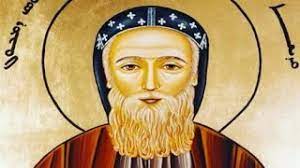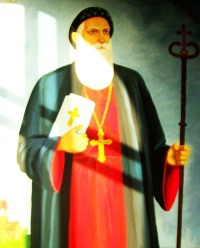St Philoxenos of Mabbug, the Martyr – Dec 10 I Bible Scholar, Philosopher, Syrian Bishop, Christological Polemicist

Philoxenos is remembered as a scholar, philosopher, Syrian bishop, an elegant writer, an exponent of practical Christianity, ascetic theologian, classical author, erudite Bible scholar, Christological polemicist, sponsor of the Philoxenian NT and a Protagonist of his era. Philoxenos was born in a Christian family, probably in the second or third quarter of the 5th century, at Tahl, a village in the district of Beth Garmai, East of the Tigris. Persia in an Aramaic family. Thus, a Persian by birth, but all his active life of which we have any record was passed in the territory of the Byzantine Empire. He was originally named Xenaya. He studied at Urhoy (Edessa) perhaps in the famous ‘School of the Persians’.
He took the monastic profession of ‘Aksenoyuto’, after his baptism. He then studied at Tel’Ada, Antioch. He later joined the monastery at Karthmin (Qartamin) and became a Priest. He travelled, stayed and taught in several monasteries in the East. The years which followed the Council of Chalcedon (451) were a stormy period in the Church. Philoxenos soon attracted notice by his strenuous advocacy of Miaphysitism. He became a supporter of Alexandrian Christology as against the Antiochians even though the school the Alexandrian group was a minority. In A. D. 485, Priest Xenaya was ordained Bishop, by the Patriarch Peter II for Mabbug (Hierapolis), by name Philoxenos. It was probably during the earlier years of his episcopate that Philoxenos composed his thirteen homilies on the Christian life and published a Syriac version of the New Testament A. D. 508 (Philoxeniana).

In A. D. 512, Patriarch Severios assumed charge replacing Flavian II. Bishop Philoxenos was one of the most learned Syrian theologians and the spokesman of the Patriarch Severios of Antioch. Mar Philoxenos has published several letters about the Chalcedonian heresy, ascetic life, the perfect Christian life, the Trinity and the Incarnation, three texts of Holy Qurbana, prayers for different hours and topics that deal with the fundamentals of the monastic and ascetic life-faith, simplicity, fear of God, renunciation, and the struggle against the demons of gluttony and fornication etc. About incarnation, he wrote: “The very personality of God the word descended from heaven and became man in the womb of the Virgin, personally without conversion. Thus, He became a man who could be seen, felt, handled; and yet as God, He continued to possess the spiritual, invisible, and impalpable character essential to Deity. Neither the deity nor the humanity was absorbed one by the other, nor converted one into the other. Nor again by a combination of the two natures was a third evolved as by chemical transformation“

Of his many writings, the following have among others so far been printed: thirteen orations on the Christian life, five treatises on the Trinity and Incarnation and several letters. In A. D. 518, the faithful Anastas Caesar died and Justinus succeeded him. Justinus was a supporter of Chalcedonians, who persecuted the faithful. Mar Philoxenus was first exiled to Philippopolis in Thracia and then to Gangra in Paphlagonia, where he died of suffocation by smoke, imprisoned in a room. The date of his martyrdom is given as 10 December. He is commemorated on December 10 and in the 5th Thubden.
0 Comments